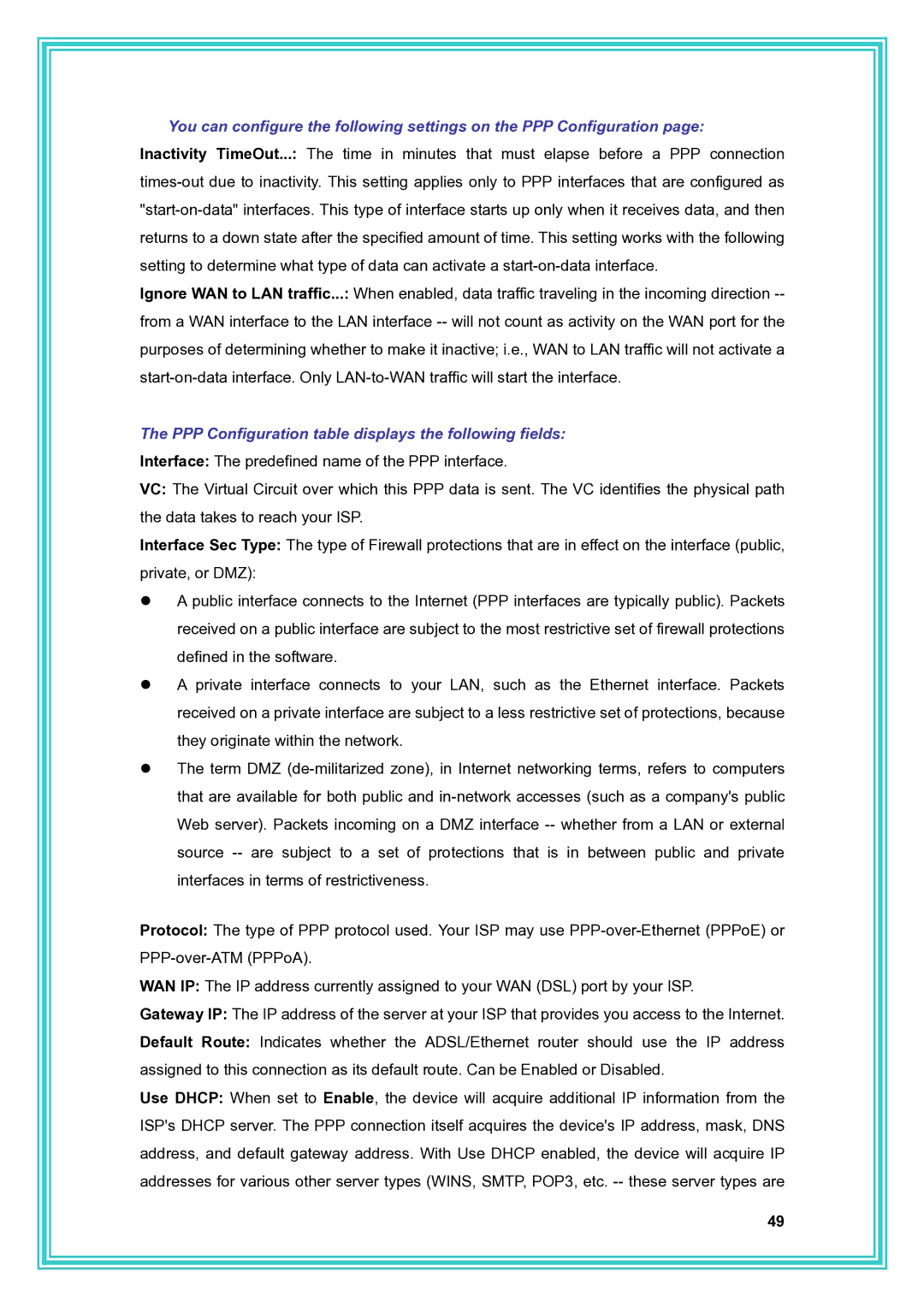
You can configure the following settings on the PPP Configuration page:
Inactivity TimeOut...: The time in minutes that must elapse before a PPP connection
Ignore WAN to LAN traffic...: When enabled, data traffic traveling in the incoming direction
The PPP Configuration table displays the following fields:
Interface: The predefined name of the PPP interface.
VC: The Virtual Circuit over which this PPP data is sent. The VC identifies the physical path the data takes to reach your ISP.
Interface Sec Type: The type of Firewall protections that are in effect on the interface (public, private, or DMZ):
zA public interface connects to the Internet (PPP interfaces are typically public). Packets received on a public interface are subject to the most restrictive set of firewall protections defined in the software.
zA private interface connects to your LAN, such as the Ethernet interface. Packets received on a private interface are subject to a less restrictive set of protections, because they originate within the network.
zThe term DMZ
Protocol: The type of PPP protocol used. Your ISP may use
WAN IP: The IP address currently assigned to your WAN (DSL) port by your ISP.
Gateway IP: The IP address of the server at your ISP that provides you access to the Internet.
Default Route: Indicates whether the ADSL/Ethernet router should use the IP address assigned to this connection as its default route. Can be Enabled or Disabled.
Use DHCP: When set to Enable, the device will acquire additional IP information from the ISP's DHCP server. The PPP connection itself acquires the device's IP address, mask, DNS address, and default gateway address. With Use DHCP enabled, the device will acquire IP addresses for various other server types (WINS, SMTP, POP3, etc.
49
